Personal Care Products and IVF Miscarriage
Air Date: Week of March 22, 2024
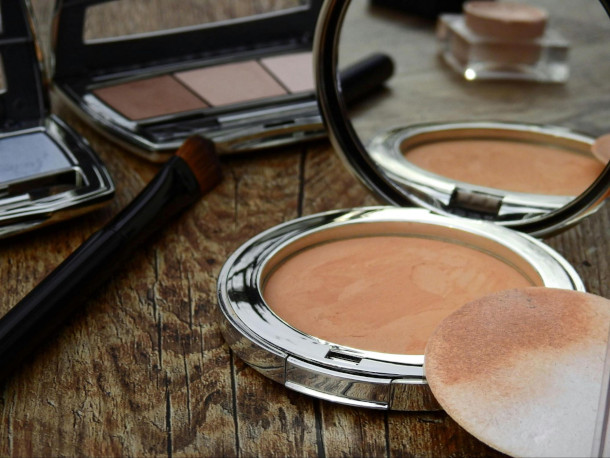
A variety of personal care products, from cosmetics to skin care, have been associated with adverse IVF outcomes. (Photo: Pixabay, Pexels)
A recent study of 1500 women in China found links between personal care product use and in-vitro fertilization problems, including slower embryo development and miscarriage. Pediatrician Leonardo Trasande joins Host Aynsley O’Neill to discuss the findings and the growing evidence linking hormone disrupting chemicals to pregnancy difficulties for people using IVF.
Transcript
DOERING: From PRX and the Jennifer and Ted Stanley Studios at the University of Massachusetts, Boston this is Living on Earth. I'm Jenni Doering.
O’NEILL: And I’m Aynsley O’Neill.
[CLIP FROM CLUELESS]
CHER: Let’s do a makeover.
[GASP]
TAI: No, no…
DIONNE: Aw, come on, let us! Cher’s main thrill in life is a makeover, okay? It gives her a sense of control in a world full of chaos.
CHER: Please??
O’NEILL: If you’ve ever seen the 1995 teen movie Clueless, then you might know the scene where popular girls Cher and Dionne set to work transforming the grungy new girl at school with an arsenal of eyeliner, foundation, lipstick, hair dye, and Coca Cola cans used as hair rollers. Coke Cans aside, putting on a full face is a daily routine for many of us. But we’re all a bit ‘clueless’ about the potential consequences to our health from some of the chemicals in mascara, concealer, and more. What we do know is that the more researchers look for connections between health problems and common cosmetics, soaps, and skin care products, the more links they uncover. These products often contain a slew of endocrine-disrupting chemicals that hack the body’s hormone function and wreak havoc on our reproductive systems. Bisphenol A, or BPA, and phthalates, which can be found in some body washes and shampoos, have been shown to reduce semen quality and negatively impact pregnancy outcomes. Makeup can contain tri-closan and a class of “forever chemicals” called PFOA, which have also been associated with the disruption of healthy pregnancies. And a recent study out of the Tongji region of China followed 1500 women undergoing in-vitro fertilization treatment and asked them how often they used different kinds of personal care products. Statistical analysis showed that the women who used cosmetics just a few times per week after IVF could be twice as likely to miscarry as those who didn’t use any. Joining me now to help us understand the research is Dr. Leonardo Trasande, a pediatrician who directs the NYU Center for the Investigation of Environmental Hazards and was not involved in the study. Dr. Trasande, welcome back to Living on Earth!
TRASANDE: Thanks for having me again.
O'NEILL: So what were the main findings of the research? What did they discover?
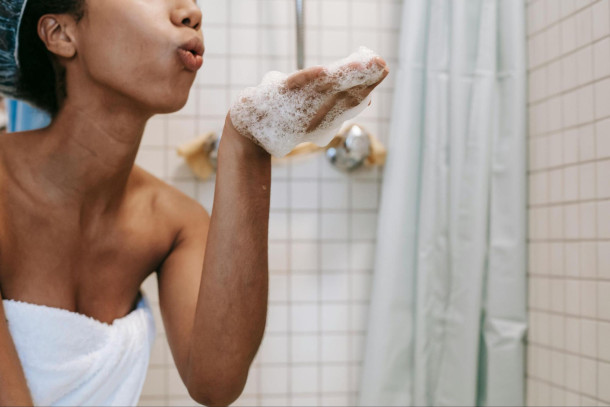
Bisphenol A and phthalates, found in many shampoos and body washes, are known to have adverse effects on reproductive health. (Photo: Shora Simasaki, Pexels)
TRASANDE: So when they followed this population, they found that the use of skincare products was associated with a slowing of the maturation of embryos, compared to those that did not use skincare products. And then when they transferred the embryos into the womb, the women who used cosmetics were more likely to miscarry than those who didn't. And then when the researchers looked at gel and soap use, they found some patterns in which there was a slowness of the division rate of the embryo, among younger women, and there was also some changes in the development of certain key parts of an embryo among women with higher weight. So you have multiple threads of evidence coming together with a consistent signal that there's something about this very susceptible window of development that is being disrupted by personal care products.
O'NEILL: And to what extent are the results sort of aligned with what we already know about endocrine disrupting chemicals, and specifically endocrine disrupting chemicals in personal care products? What adds more evidence to what we knew already, and what's new here?
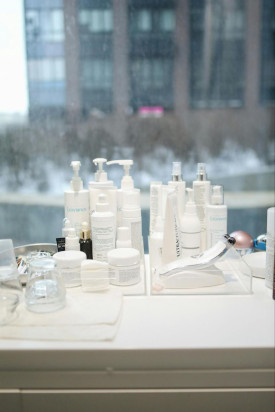
The study found that use of skincare products was associated with slower embryo maturation. (Photo: Polina Tankilevitch, Pexels)
TRASANDE: So there are studies out of colleagues at the Massachusetts General Hospital and the Harvard School of Public Health that have found that when you measure urinary levels of the chemicals that are often found in these personal care products, phthalates, scents that can have sex specific disrupting effects, as well as other adverse effects, in folks who are trying to conceive via IVF, you have delayed pregnancy outcomes, and ultimately, in some cases, more likelihood of miscarriage. And then when you take a population like that and follow the kids themselves, you start to see changes in their health and well being. We already know that children born to in vitro fertilization families have more adverse outcomes. We often thought, well, it's the earlier exposure to contaminants or other factors or genetics, and many reasons, why that couple might be having difficulty conceiving in the first place, which is why they need in vitro fertilization. But those studies at Mass General Hospital and other places across the planet have identified a consistent pattern in which this is an especially vulnerable population almost to a second hit. And that second hit reverberates even more loudly than we do see when the same exposure occurs in folks who don't have in vitro fertilization as the method of pregnancy. But this is a very valuable study in that it adds to the base of evidence suggesting that a population that is likely to be vulnerable to chemical effects can be disrupted at a very crucial window of embryonic development. That embryo is going to divide and divide and divide all the way in to eventually, hopefully, making you a human being.
O'NEILL: One thing that caught my eye is that the study talks about extremely broad categories. It's skincare products, gel and soap, cosmetics. We're not talking specific brands or even really specific products. What do you make of the aspect of that research design in that we're looking at such ambiguous categories?
TRASANDE: That's the grain of salt that has to be put in there. So that introduces what we call exposure imprecision, which literally means you can't precisely evaluate what the exposure is that's causing the potential harm. Now, most statisticians will tell you that when you have that kind of imprecision, it actually makes it harder to find an effect. So that's why I think it's all the more remarkable that you see something and multiple signals, frankly, here.
O'NEILL: As you acknowledge this is a vulnerable population already. And then there's a bit of ambiguity when it comes to this term of personal care products. What else sort of needs to be taken into account when drawing a conclusion from this study?
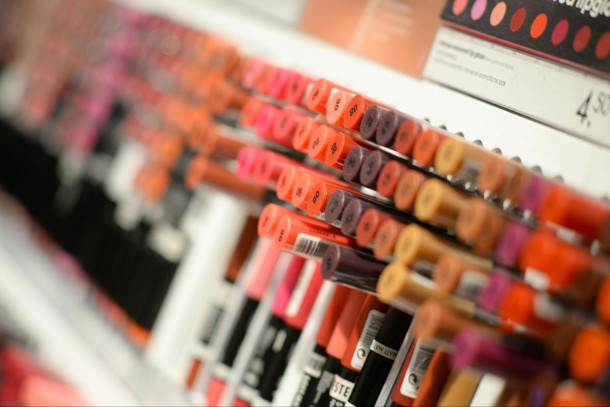
For the women in the study, the odds of experiencing a miscarriage was higher among those who reported using cosmetics just a few times a week compared to those who didn’t use cosmetics at all. (Photo: Skitterphoto, Pexels)
TRASANDE: That's a completely fair question because the population is from one part of the world. It happens to be from a part of the world where they have a track record of following populations extremely carefully, and providing valuable insights that as an American researcher, I have difficulty pulling off. And then the products used in China, in this region of China, mind you, might not even be representative of the entirety of China. Look at Europe and the United States, for example. The Food and Drug Administration has only banned 11 or so chemicals in personal care products and cosmetics. The European Union has banned over 1300. So when you use a personal care product, simply by virtue of taking a flight across the pond, you have a difference in what your exposure pattern is. That's an important nuance to point out in addition to the fact that this population isn't representative of the United States, there may be different genetics and other coexisting environmental and social factors involved.
O'NEILL: Dr. Trasande, what further questions does this study bring up for you? Where do you see this science, these investigations going from here?
TRASANDE: So coming into the field of environmental health, I, as a pediatrician, was always focused on pregnancy and early childhood, as windows of susceptibility to toxic exposures. But the more studies like this come out, the more they unravel another layer to the onion. So exposures when we measure them in pregnancy are typically, you might get first trimester exposure, you really might get second trimester exposure in many cases. But a study like this, that starts to look at what you might call the embryonic phase of exposure, you get a more refined window of when things might be toxic to a child's development. And you realize that embryonic development is a very, very vulnerable phase of a child's growth. But then the more you unravel the onion, the more you realize, whoa, this is a bigger and more complicated story than you might be able to deal with fully in a lifetime. And that is because the oocytes and sperm cells that make humans living today, were the byproduct of a parent who themselves had their ovaries and testes developing during their in utero development in their grandparents' phase of life. So exposure two generations back may have consequences that only appear now.
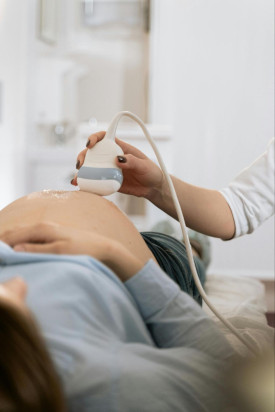
Dr. Trasande says this study shows that the embryonic phase of development is extremely vulnerable to chemical exposure. (Photo: MART PRODUCTION, Pexels)
O'NEILL: So even with the caveats that we've discussed, this study does add a piece to the endocrine disruption puzzle. I think it's safe to say that the vast majority of people use personal care products in the categories of skincare, soap, cosmetics, at least some time in their life. So what in the world can be done for those who are concerned about the endocrine disrupting chemicals that might be in their products?
TRASANDE: So the great news is that this doesn't require a PhD in chemistry, and it doesn't have to break the bank. The study I use often to drive this point home is from an agricultural community in California, relatively low socio economic status, in which they simply read the label. And teens were told, teen girls were told, not to use products with fragrances or phthalates. They dropped their levels of phthalates in urine and other related endocrine disruptors in three days. Three days.
O'NEILL: Wow.
And that's the short term readout. In the medium term, in weeks, at most, you see changes in hormone levels. In the longer term, you can see benefits accumulating in the form of reductions in chronic disease. So there are short, medium, and long term consequences to continuing to change behavior, regardless of what disease or disability or exposure pattern you had in the past. And regardless of all the exposures you've had in the previous generations that I talked about. Now, in this very app-ified world we live in, the good news is there's also an app for that. Environmental Working Group has an app called Skin Deep that I like very much, very clear communication scoring system 1 to 10, green lights, yellow lights, red lights, things that make it easy to discern which products have which chemicals of concern.
O'NEILL: Dr. Trasande, what are you hoping will come out of the publication of the study?
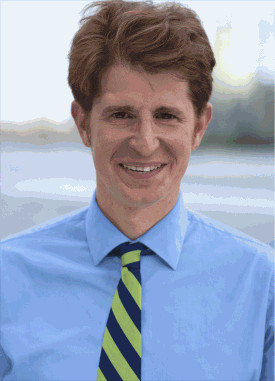
Dr. Leonardo Trasande is a pediatrician who directs the NYU Center for the Investigation of Environmental Hazards. (Photo: Cheryl Stockton)
TRASANDE: So we can start with awareness. In addition, we do need more of research. And I know that that's a cop out for most researchers to bring up. But there's studies on the way that are trying to evaluate preconceptual exposure in a systematic way across the United States. That's a program I'm privileged to be part of called the Environmental Influences on Child Health Outcomes program, that is trying to do a preconception study largely with women who just had a baby. And there are other studies on the way that are trying to bring populations who may or may not be planning a pregnancy. And that's the challenge, because reproductive choice is real, and people are deciding when or when not to have a pregnancy. And in that regard, it can be hard to identify or even have people acknowledge that they're trying to have a pregnancy, and so they may not participate as readily in these kinds of studies. So the design is challenging, but it's important to do because what we need to do is to measure these exposures, be it by questionnaire that this study did in China, or using biological measures.
O'NEILL: Dr. Leonardo Trasande de is a pediatrician who directs the NYU Center for the Investigation of Environmental Hazards. Dr. Trasande, thank you so much for your time today.
TRASANDE: It's always a pleasure, Aynsley. Thanks again.
Links
National Institute of Health | “Environmental Influences on Child Outcomes (ECHO) Program”
Download Environmental Working Group’s Healthy Living App with Skin Deep Database
Living on Earth wants to hear from you!
Living on Earth
62 Calef Highway, Suite 212
Lee, NH 03861
Telephone: 617-287-4121
E-mail: comments@loe.org
Newsletter [Click here]
Donate to Living on Earth!
Living on Earth is an independent media program and relies entirely on contributions from listeners and institutions supporting public service. Please donate now to preserve an independent environmental voice.
NewsletterLiving on Earth offers a weekly delivery of the show's rundown to your mailbox. Sign up for our newsletter today!
 Sailors For The Sea: Be the change you want to sea.
Sailors For The Sea: Be the change you want to sea.
 The Grantham Foundation for the Protection of the Environment: Committed to protecting and improving the health of the global environment.
The Grantham Foundation for the Protection of the Environment: Committed to protecting and improving the health of the global environment.
 Contribute to Living on Earth and receive, as our gift to you, an archival print of one of Mark Seth Lender's extraordinary wildlife photographs. Follow the link to see Mark's current collection of photographs.
Contribute to Living on Earth and receive, as our gift to you, an archival print of one of Mark Seth Lender's extraordinary wildlife photographs. Follow the link to see Mark's current collection of photographs.
 Buy a signed copy of Mark Seth Lender's book Smeagull the Seagull & support Living on Earth
Buy a signed copy of Mark Seth Lender's book Smeagull the Seagull & support Living on Earth

